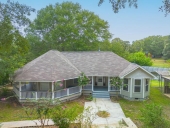









Paramount Natural Design-Build Architect, Engineering Services, GC, LLC.




Paramount Natural Design-Build Architect, Engineering Services, GC, LLC.





Paramount Natural Design-Build Architect, Engineering Services, GC, LLC.




Paramount Natural Design-Build Architect, Engineering Services, GC, LLC.




Paramount Natural Design-Build Architect, Engineering Services, GC, LLC.




Paramount Natural Design-Build Architect, Engineering Services, GC, LLC.




Paramount Natural Design-Build Architect, Engineering Services, GC, LLC.




Paramount Natural Design-Build Architect, Engineering Services, GC, LLC.








I like the idea of finished concrete floors, although I understand why some object. I love the look of the concrete acid stains and using it as a heat since to moderate temperature swings.
I would put more windows on the south side in the great room for more passive solar heating. It can save a fortune in heating bills for very little cost, especially since you are using all electric.
How can this be built with more insulation and features than conventional cconstruction, for less money
How did you solve the problem of moisture coming up from the ground into the concrete?
Did you provide expansion joints or control joints to control where the concrete will crack? I would cut control joints into a pattern on the floor and fill with grout to make the concrete look like stone or tile. Then, if/when the slab cracks you can regrout.
Paramount Natural Design-Build Architect, Engineering Services, GC, LLC.
 2
2








Paramount Natural Design-Build Architect, Engineering Services, GC, LLC.
 1
1








 Easy stuff, no challenge at all. All I have to say is WHAT A MESS THIS AMERICAN INDUSTRY IS TODAY!!! I don't follow any of it.
Easy stuff, no challenge at all. All I have to say is WHAT A MESS THIS AMERICAN INDUSTRY IS TODAY!!! I don't follow any of it.
Paramount Natural Design-Build Architect, Engineering Services, GC, LLC.




Paramount Natural Design-Build Architect, Engineering Services, GC, LLC.




 .....and the other natural materials we use most have never heard of. The suppliers next to me are not liking much of what I have to say about the toxic products they sell and use. We have a latex paint rep next door and been having people smell the difference between our zero MVOC natural mineral silicate paints and the ones they use. We have been doing water test on mineral wood rigid boards we use that are impressive right in front of people. I have been also explaining our breathable envelops and how they vapor dry and shed water, fungi, bacterial in most homes and many have agreed and showed us pictures of it in their homes .....
.....and the other natural materials we use most have never heard of. The suppliers next to me are not liking much of what I have to say about the toxic products they sell and use. We have a latex paint rep next door and been having people smell the difference between our zero MVOC natural mineral silicate paints and the ones they use. We have been doing water test on mineral wood rigid boards we use that are impressive right in front of people. I have been also explaining our breathable envelops and how they vapor dry and shed water, fungi, bacterial in most homes and many have agreed and showed us pictures of it in their homes .....
Paramount Natural Design-Build Architect, Engineering Services, GC, LLC.

|
Live large! And I'm talking to you tiny ad!
Support permies and give beautiful gifts to gardeners: permaculture playing cards.
https://gardener-gift.com/
|








